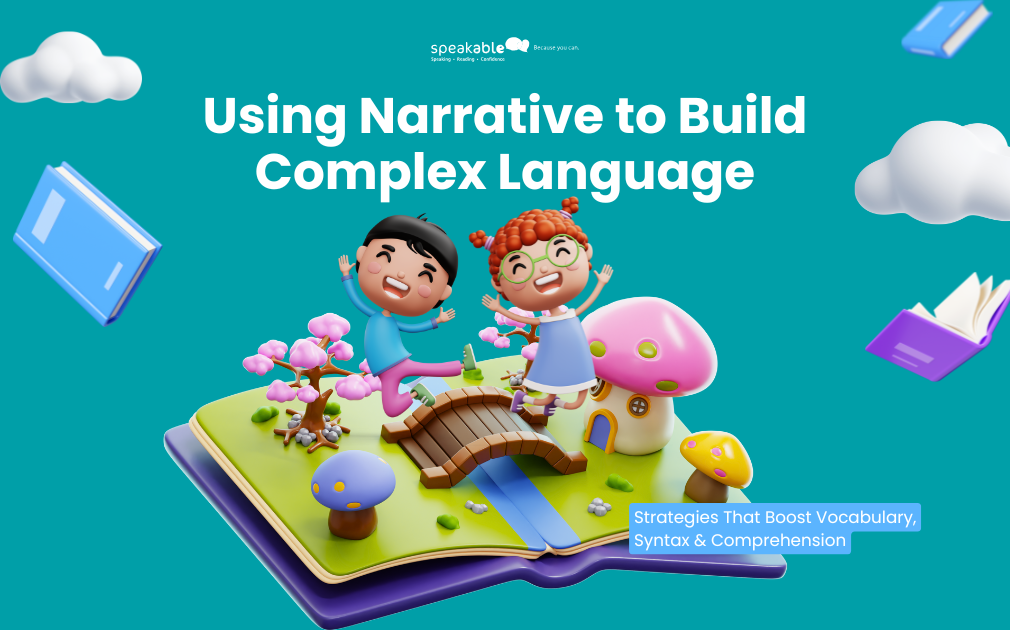Why Storytelling Is the Secret to Unlocking Complex Language in Children
Discover how storytelling can supercharge your child’s language development. Learn practical strategies to grow vocabulary, strengthen syntax, and boost comprehension through the power of narrative.
✨ Every child loves a good story, but did you know stories can do much more than entertain?
Narrative is one of the most powerful tools to unlock complex language. Through storytelling, children not only practice communication, but also expand their vocabulary, master longer sentences, and sharpen their understanding of the world around them.
In this post, we’ll share simple, practical strategies parents, educators, and therapists can use to transform stories into a language-building powerhouse.
1. Why Narrative Is a Language Superpower
Narrative goes beyond reading and telling tales. It’s a natural way to:
- Grow Vocabulary → Every story introduces words in context, making them stick.
- Strengthen Syntax → Retelling events pushes children to connect ideas with “because,” “after,” or “although.”
- Deepen Comprehension → Following characters and events helps children understand cause-and-effect and different perspectives.
💡 Think of stories as the “gym” where language skills get stronger.
2. Vocabulary Growth Through Storytelling
- 📚 Read Rich Texts → Choose books with descriptive and unusual words.
- 🕸 Word Webs → After reading, create simple mind maps to explore synonyms and meanings.
- 🎭 Play with New Words → Encourage kids to act them out or use them in pretend play.
3. Syntax: Building Stronger Sentences
- 🧩 Sequencing Games → Retell stories with “first, then, next, finally.”
- ✍️ Sentence Expansion → Start small and grow: “The dog barked” → “The big brown dog barked loudly at the cat.”
- 🎤 Role-Play Dialogue → Practice conversations with characters, switching roles to vary sentence types.
4. Comprehension Made Fun
- ❓ Ask “Wh” Questions → Who? What? Where? Why?
- 🔍 Make Predictions → Pause mid-story and ask: “What do you think will happen next?”
- 🏗 Story Grammar Framework → Break stories into characters, setting, problem, solution, conclusion.
5. Practical, Everyday Ideas
- 🎲 Use story cubes or picture cards to invent silly new stories.
- 🖍 Start a “My Day Story Journal” with drawings + sentences.
- 📖 Make a class storybook project where everyone adds a page.
Conclusion
Stories are more than fun, they’re the key to complex language development. By weaving narrative into everyday life, you’ll help children speak with confidence, think critically, and connect deeply with others.
👉 Ready to try it out? Start tonight with your child’s bedtime story, just one extra question or retelling could be the spark that transforms their language skills.




